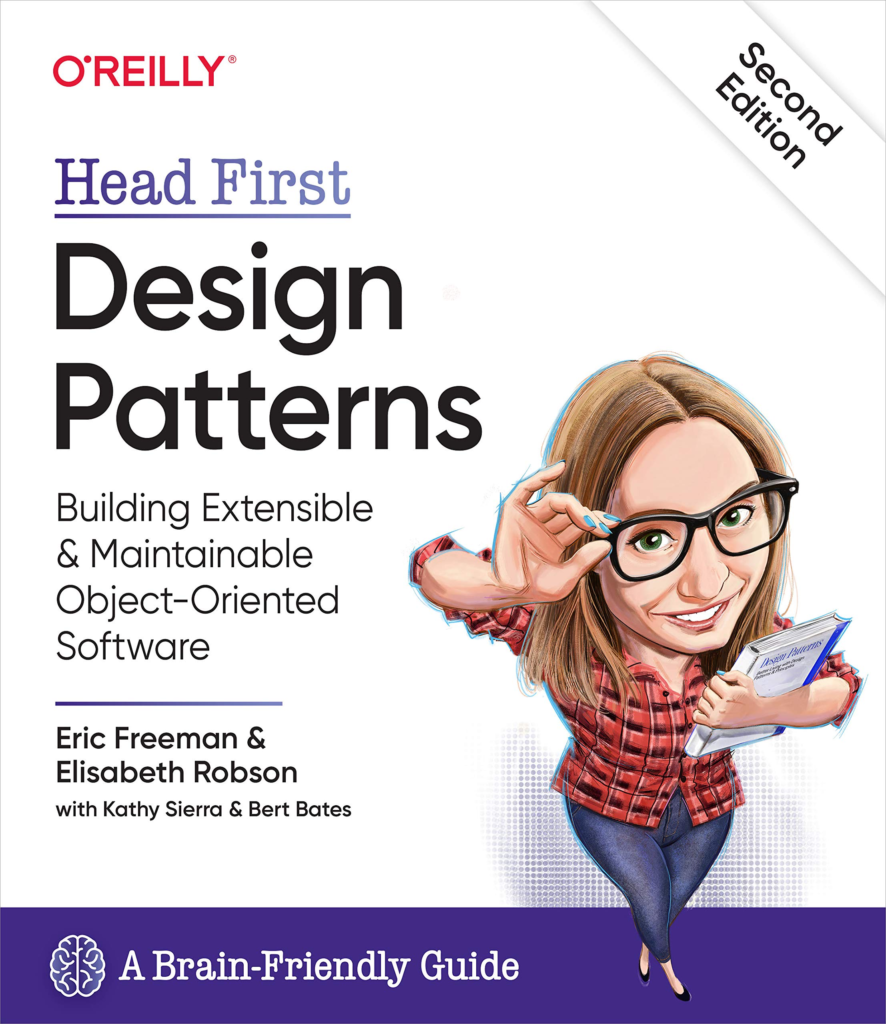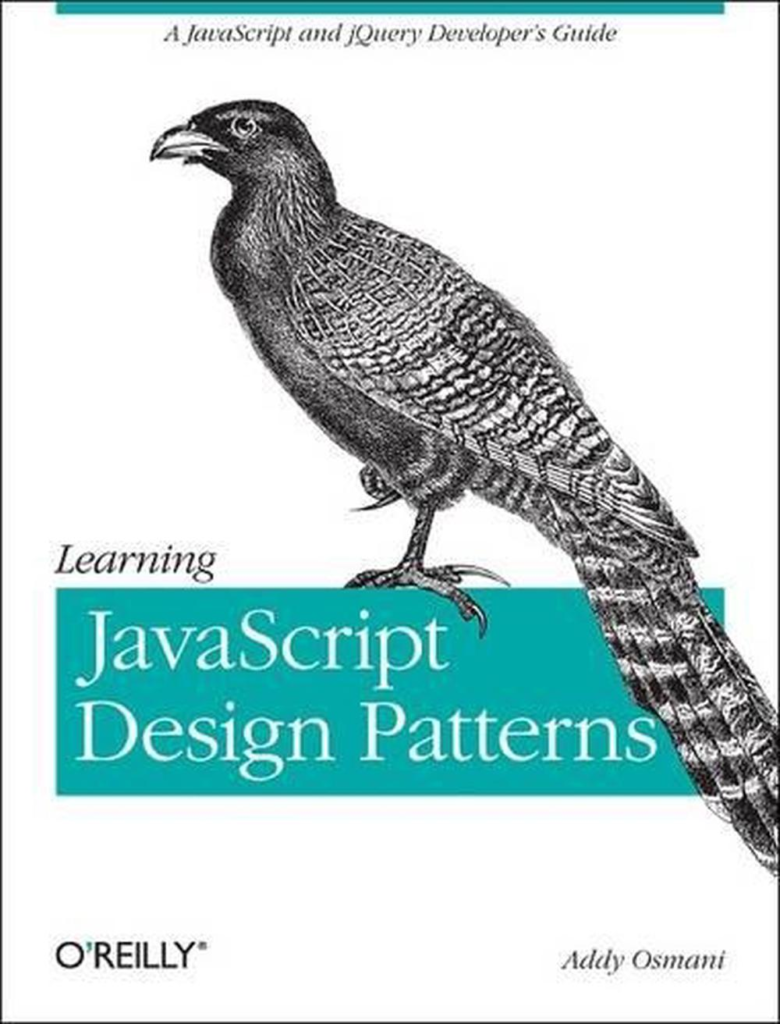
1.Design Patterns: Elements of Reusable Object-Oriented Software

Four top-notch designers present 23 undocumented patterns for object-oriented software design. These patterns allow designers to create more flexible, elegant, and reusable designs without having to rediscover the design solutions themselves. The authors describe patterns and their application in software development, systematically naming, explaining, evaluating, and cataloging recurring designs. The book teaches how to leverage these patterns to solve design problems efficiently. Each pattern is compiled from real systems and includes code for implementation in object-oriented programming languages like C++ or Smalltalk. This is a very popular book.
Rated 4.2 on Goodreads.
This book can be purchased on Amazon.com.
2.Head First Design Patterns: Building Extensible and Maintainable Object-Oriented Software 2nd Edition

Design Patterns is a book that offers lessons learned from experienced software design professionals. It provides a visual format that is designed for the brain’s workings, allowing readers to learn design principles and patterns without getting tired. The book focuses on the importance of patterns, their usage, and their application in their own designs. It also highlights the object-oriented design principles based on these patterns. With hundreds of thousands of developers who have improved their object-oriented design skills, Design Patterns is a valuable resource for those looking to tackle software design problems.
Rated 4.3 on Goodreads.
This book is available on Amazon.
3.Learning JavaScript Design Patterns: A JavaScript and React Developer’s Guide

The updated second edition of Learning JavaScript Design Patterns provides a comprehensive guide to writing beautiful, structured, and maintainable JavaScript using modern design patterns. Author Addy Osmani covers modules, mixins, observers, mediators, performance and rendering patterns like server-side rendering and Islands architecture, and architectural patterns like MVC, MVP, and MVVM. The book covers over 20 design patterns in JavaScript and React, covering creational, structural, and behavioral categories, essential performance patterns like dynamic imports and code-splitting, and rendering patterns like server-side rendering and hydration.
Rated 4.2 on Amazon.
This book can be purchased here.
4.Peeling Design Patterns: For Beginners & Interviews (Design Interview Questions)

“Peeling Design Patterns: For Beginners and Interviews” by Narasimha Karumanchi and Prof. Sreenivasa Rao Meda is a book that provides a clear explanation of design patterns in a simple and straightforward manner. It is suitable for beginners without any background in software design and covers real-time design interview questions. The book aims to help readers create better designs and participate in design discussions in their daily work. It also includes real-time examples to enhance understanding and prepare for interviews. The book covers various concepts and topics.
Rated 4.1 on Goodreads.
This book can be purchased on Amazon.com.
5.Design Patterns in Python: Common GOF (Gang of Four) Design Patterns implemented in Python (Software Engineering)

This book provides free access to online instructional videos on 23 common GOF (Gang of Four) Design Patterns in Python. These patterns are descriptions or templates that can be applied to recurring problems in software design. Familiarity with these patterns is useful for planning, discussing, developing, managing, and documenting applications. The book covers various design patterns, including creational, structural, and behavioral ones. It is a great book for those who want to take a break from their computer and read. This is one of the best book to learn design patterns
Rated 4.2 on Amazon.
You can buy this book here.
6.Selenium Design Patterns and Best Practices

This book is designed for anyone who wants to create an agile test suite for their web application. It covers controlling Selenium WebDriver in major programming languages like Java, Ruby, Python, and.NET, implementing simple test scripts or complex Page Objects frameworks, dealing with AJAX and jQuery, removing test instabilities, dealing with data uncertainties using fixtures, JSON APIs, and API stubbing, improving the test suite continuously through refactoring code and the DRY principle, and stabilizing tests using patterns like the Action Wrapper and Black Hole Proxy. Selenium WebDriver is a global leader in automated web testing, and this guide provides all the skills needed to create a functional test suite. It covers transitioning to real programming languages like Ruby or Java, improving code quality through refactoring, and planning for future website development to future-proof the test suite. The book includes test examples against a life-like e-commerce store and detailed step-by-step code reviews, making it suitable for anyone looking to build a test suite that is easy to maintain.
Rated 3.4 on Goodreads.
This book is available here.
7.Design Patterns in C#: A Hands-on Guide with Real-world Examples

This book covers 23 GoF design patterns, as well as alternative patterns like Simple Factory, Null Object, and MVC. It covers asynchronous programming, including the TAP and APM patterns. The book provides easy-to-follow examples and provides a collection of programs to port over to projects. It also discusses criticisms of design patterns and anti-patterns. Each chapter includes a Q&A session, covering pros and cons of each pattern. The book is intended for software developers, testers, and architects, and is designed to help them work with each design pattern, implement them in real-world applications, and choose an alternative by comparing their pros and cons.
Rated 4.3 on Amazon.
This is available on Amazon.com.
8.Hands-On Design Patterns with C++: Solve common C++ problems with modern design patterns and build robust applications, 2nd Edition

This book is a comprehensive guide on C++, covering concepts like OOP, functional programming, generic programming, concurrency, and STL. It provides a detailed understanding of C++’s core patterns and components, as well as tricks and techniques to solve common design and architectural challenges. The book aims to help experienced C++ developers and programmers understand how to use design patterns to create maintainable, robust, and reusable software. It covers common design patterns, generic programming, powerful C++ idioms, and new patterns made possible by language features of C++17 and C++20. The book is designed for experienced C++ developers and programmers who wish to learn about software design patterns and principles to create robust, reusable, and easily maintainable programs and systems.
Rated 4.8 on Amazon.
You can buy this book here.
9.Adaptive Code: Agile coding with design patterns and SOLID principles (Developer Best Practices)

Adaptive Code, Second Edition by Gary McLean Hall provides a comprehensive guide to creating code that can adapt to changes without significant rewrites. The book covers Agile best practices, principles, and patterns for designing and writing code that can evolve quickly and easily, with fewer errors. It includes insights on Kanban, dependency inversion, and creating reusable abstractions. The book is designed for programmers of all skill levels, who will likely have programmed in C#, Java, C++, or similar object-oriented languages and familiar with core procedural programming techniques. The book offers practical insights on design patterns, SOLID principles, unit testing, refactoring, and related topics, aiming to help programmers create code that can survive major changes in requirements.
Rated 4.4 on Goodreads.
You can buy this book here.
